Samsung Galaxy S7 edge vs Samsung Galaxy S6 edge+
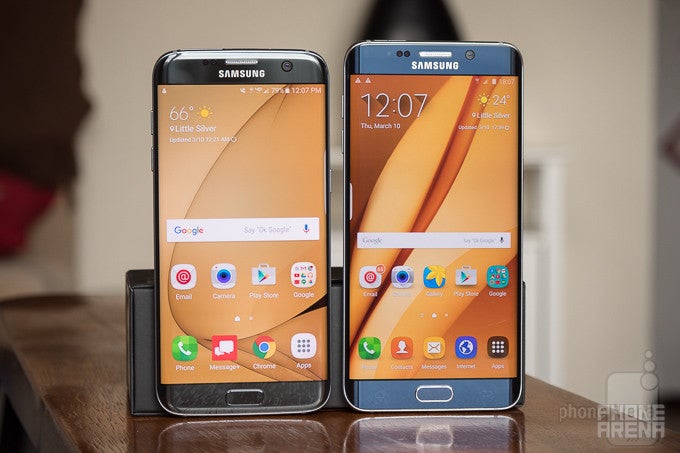
Introduction
With the Galaxy S7 and S7 edge's release, Samsung is coming back with a bang, realizing what it started last year to its fullest potential. The Galaxy S7 edge has several things going over its predecessor, such as subtle design enhancements, significant hardware improvements, and user-centric niceties like water resistance and expandable storage. Although it lacks groundbreaking features, such as the iPhone 6s' 3D Touch interface or the LG G5's novel modularity, the Galaxy S7 edge is among the most attractive and technologically accomplished Android smartphones to date.
So, does the new Galaxy S7 edge offer any significant advantages over the S6 edge+, especially now that the latter is discounted and remains an up-to-date, very capable phone? Half a year after its release, the device still holds its own, and could potentially sway some buyers away from the Galaxy S7 edge as it brings much of its allure in a slightly bigger-screened package. This is a fast-moving phablet with mostly the same edgy looks and competitive features, available at a cheaper price. Seeing them side by side, some are bound to question whether they really want the latest and greatest by Samsung, or the S6 edge+ is the more sensible purchase.
With this in mind, let's compare the Galaxy S7 edge and the Galaxy S6 edge+ so you can get a better idea about what you're going to gain, and what you're going to miss on, depending on your choice.
Design
Both phablets look and feel absolutely premium, but the S7 edge is easier to handle and waterproof, while the Galaxy S6 edge+ offers a bigger screen.
Being an iterative upgrade, the Galaxy S7 edge doesn't look much different than its predecessor, but the incremental changes have refined the design. It is a futuristic and elegant device whose curved screen is immediately striking, but the same applies for the Galaxy S6 edge+. Both devices are a sight to behold with their smooth, glass-covered panels and sculpted metal frames. This doesn't mean they handle equally well, though.
Samsung actually took a cue from the Galaxy Note 5, transplanting its back's subtle curve onto the Galaxy S7 edge. Thus, its back isn't flat like on the S6 edge+, therefore the handset feels better in the palm. Alas, both devices are utter fingerprint magnets with their glassy bodies, needing a thorough wipe every now and then. When clean, though, both look and feel absolutely premium.
Of note is that the curved screen design has let Samsung make both smartphones narrower than if they had regular screen bezels. This makes the Galaxy S7 edge and Galaxy S6 edge+ reasonably sized, considering their big screens. However, the former is easier to operate with its slightly smaller footprint and comfortably curved back, while the latter is definitely geared towards two-handed use. Weight-wise, both devices feel substantial with their metal and glass build, yet lighter than what you'd expect.
They are sold in a somewhat conservative choice of colors, though – Black, White, Gold, and Silver. While all too predictable at this point, the color variants do look nice and classy, and the way light plays off both smartphones' metal and glass bodies is just fancy! However, the Galaxy S7 edge does have a design advantage over the Galaxy S6 edge+ in that the handset is IP68-certified, which means it's dust-tight and can be safely submerged into water 1 meter (3.28 feet) deep.
Being the technological powerhouses they are, both handsets have fingerprint sensors for biometric security, heart rate sensors, wireless charging and rapid charging.
Display
Samsung's latest AMOLED displays are the industry's best, but the Galaxy S7 edge offers no improvement over the Galaxy S6 edge+.
Samsung's latest AMOLED displays are one of the best the industry has to offer, and neither the Galaxy S7 edge, nor the S6 edge+ are exceptions to that. Both are very sharp with their Quad-HD resolution (1440 x 2560), and size-wise, the former is 5.5 inches, while the latter is 5.7 inches by diagonal. We're talking big screens here, folks!
Both displays are reasonably color-accurate, although red colors, in particular, are somewhat off the reference points and appear oversaturated. Unfortunately, the Galaxy S7 edge's display can't really be called an improvement over the Galaxy S6 edge+, but it still ranks among the best smartphone screens there are.
With a minimum of 2 nits and maximum of 493 nits brightness output, the Galaxy S7 edge isn't better than the Galaxy S6 edge+'s 1 nits minimum and 502 nits maximum levels. Still, these are sufficiently bright displays that can be used under intense light and won't strain your eyes in the dark. However, there are other smartphones that offer a peak brightness output of 600 to 800 nits and above, so Samsung isn't a leader here. Viewing angles are good, but shifting the perspective introduces visible color distortion – a shortcoming of Samsung's current AMOLED screens.
While it lacks technological improvements, the S7 edge's display does have something to differentiate it from the S6 edge+'s, and that's 'Always On' functionality. When it's in your hands, the S7 edge constantly keeps part of its screen on in order to show you glanceable info, such as the time, notifications, and appointments. The best part is that this is supposed to help with battery life, as Samsung and fellow 'Always-On' purveyor LG claim users turn on their screens up to 200 times a day just to check the time.
Interface and Functionality
The core user experience is essentially the same, and both phablets have the cool Edge UX to entertain you with.
Both phablets run Android Marshmallow, which is the most up-to-date version at the time of writing. It is topped off with Samsung's familiar TouchWiz user interface. At this point in its evolution, TouchWiz feels coherent enough from a design and functionality standpoint. The menus are straightforward and graphically clean, which helps to get around the overwhelming number of options. No, it's not as optimized and fluent as it needs to be, but the two high-end models we're looking at definitely have the hardware muscle to showcase TouchWiz in its best light.
The S7 edge and S6 edge+ are able to hold their own in productivity terms, as Samsung hasn't stripped side-by-side multitasking off the operating system. They also come with their own special edge UX. The edge panel houses convenient shortcuts to apps and contacts. It also offers the macro feature, which lets you automate functions such as opening the camera and then switching to the front-facing camera to snap a selfie. The edge panel might feel like a novelty to some, but those that actually use it will find it quite convenient.
Processor and Memory
Both phablets are speed demons, but the Galaxy S7 edge is graced by the latest achievements in mobile computing, while the S6 edge+ uses Samsung's best technology from last year.
Although both are very capable hand-held computers, the Galaxy S7 edge is graced by the latest achievements in mobile computing, while the Galaxy S6 edge+ uses Samsung's best technology from last year. In America, the GS7 edge is powered by the Qualcomm Snapdragon 820 processor, which boasts four custom 64-bit CPU cores, a powerful Adreno 530 GPU, and fast, power-efficient LPDDR4 RAM. Outside the U.S., some variants will run on Samsung's own Exynos 8990 chipset, which has performance parity with Qualcomm's and is 30% faster than the Exynos 7420 chip in the Galaxy S6 edge+.
That aside, both devices have 4GB of LPDDR4 RAM each, along with at least 32GB of crazy-fast UFS flash storage. However, the Galaxy S7 edge's memory can be expanded with a microSD card, while the Galaxy S6 edge+ doesn't have this option. Either way, most users won't notice a major difference in how the smartphones handle, because they are both very fast, even if TouchWiz can be prone to lag and stutter.
In performance benchmarks, the Galaxy S7 edge racked up 128,191 points in the AnTuTu system test, which is in line with other Snapdragon 820-powered smartphones like the LG G5 and Xiaomi Mi 5. It also produced a hearty 52 frames per second in the T-Rex HD test, and an okay 28 frames in the intense Manhattan on-screen test. Comparatively, the Galaxy S6 edge+ scored 69,306 points in AnTuTu. It managed 37 frames per second in the GFXBench test and 15 frames per second in the Manhattan test. Clearly, the newer hardware gives the Galaxy S7 edge a considerable performance... well, edge, although both smartphones are still very fast in everyday use and have no problems playing the latest 3D games.
Of note to mobile gamers, which are probably eyeing Samsung's handsets for their beautiful displays and sheer horsepower is that the Galaxy S7 edge supports the Vulkan advanced graphics API, which lets game developers tap into the raw potential of the device's hardware for visceral effects and faster performance. Speaking of games, the new Game Lounge app on the GS7 edge unlocks some cool options for gamers, such as gameplay footage recording, easy notifications dismissing while gaming, and additional performance optimizations. It's too early to tell how these fare, but it's good to know Samsung still takes the gaming crowd seriously.
Internet and Connectivity
You won’t be disappointed by either of the phablets' fast and smooth response.
Both the Galaxy S7 edge and the Galaxy S6 edge+ are ideal for surfing the web, because they have big and vibrant displays, powerful hardware, and support for modern LTE connectivity standards. You won't have to scroll, pinch, and zoom web pages as much, seeing that their displays are able to show more content at once than smaller screen devices. Even if you still have to do that, you won’t be disappointed by either of the smartphones' fast and smooth response.
The phablets support 4G LTE connectivity with most bands in existence and peak downlink speeds of up to 600Mbps. There's also dual-channel Wi-Fi, NFC, Bluetooth 4.2 with support for the low energy profile, and positioning via the GPS, Glonass, and Beidou systems.
Camera
The S6 edge+ already takes excellent photos, but the Galaxy S7 edge has faster auto-focus and better low-light photography.
Samsung has always insisted on high-quality cameras for its flagship smartphones. Last year, the Galaxy S6 edge+ presented a strong foundation to improve upon with its 16-megapixel rear camera. Its sensor has 1.1 micron pixels, and the setup is complete with an LED flash and f/1.9 aperture. While this camera still takes some of the best photos around, there's always room for improvement, and Samsung took advantage of that for the Galaxy S7 edge. The new smartphone rocks a 12MP rear camera, which may be smaller in resolution, but makes up for that with bigger, 1.4 micron pixels and a wider f/1.7 aperture. This lets the camera soak in more light, which is crucial for low-light performance.
Moreover, the Galaxy S7 edge's camera features Dual Pixel Phase Detection auto-focus. Instead of each pixel comprising a single photodiode for image capture, the Dual Pixel CMOS sensor allocates two photodiodes for every single pixel. In short, this makes focus quicker and more accurate, both for photos and video recording. Speaking of videos, both handsets play and record footage in resolutions up to 4K without a hitch.
On the front side of things, both the Galaxy S7 edge and the Galaxy S6 edge+ have 5MP selfie cameras, capable of capturing face and group shots with their wide angle lenses.
Zooming through daylight photos taken with the Galaxy S7 edge's reveals digitalization artifacts (look at the crowns of trees). Objects in the background tend to appear smeary, but those in the foreground are nicely sharp and detailed. The automatic exposure is very good, with the skyline appearing bright and blue. The camera favors a warm color balance with a contrast boost to make the colors punchier and a bit larger than life. Shadows appear very black, and dark spots are prone to noise, which gets treated with heavy filtering.
Daylight photos taken with the Galaxy S6 edge+ have a more natural color balance. The colors aren't as punchy and make photos from the S7 edge seem artificially enhanced in comparison. The level of detail resolved is still very good, although photos do look a bit softer, probably due to less sharpening filters applied. With its less aggressive filtering, the Galaxy S6 edge+ does a better job preserving the fine detail it captures.
Indoor shots under both artificial and ambient lighting present a warm color balance with low levels of noise. They are quite close to what you'll end up seeing in real life. The two smartphones fare evenly in this regard, although we suspect most users will favor the Galaxy S7 edge for its seemingly sharper details.
Night time shots is where the improvements made to the Galaxy S7 edge's image quality are most evident. With its bigger pixels and wider aperture, Samsung's curved screen flagship manages very well exposed night shots that look especially lifelike, rather than yellow-tinted facsimiles of the scene. Noise levels are kept impressively low. Comparatively, photos taken by the Galaxy S6 edge+ look darker and a bit softer, with artificial light sources having a pronounced 'halo effect'. Kicking in the flash produces pleasant, evenly illuminated shots in both smartphones.
Video quality
The Galaxy S7 edge and Galaxy S6 edge+ are proficient camcorders that capture video in a wealth of resolutions, starting with 3840 x 2160 UHD all the way to the VGA resolution from the ancient epochs. The handsets support fast and slow motion capture as well, with the Galaxy S7 edge having the extra treat of 240FPS slow-motion capture in 720p resolution. Currently, only the Nexus 6P and the new iPhones can pull that off.
Video recording quality is fine in both, although when it comes to low-light situations, the S7 edge has a literal edge with its camera's bigger pixels and wider aperture. The phablets boast reasonably good image stabilization to keep things steady, audio sounds clear & distinct, exposure adjustment is gradual, and the continuous auto-focus is spot-on.
Multimedia
Neither the Galaxy S7 edge, nor the Galaxy S6 edge+ have anything to disappoint you with in this direction.
Multimedia is what phablets do best, and thankfully, neither the Galaxy S7 edge, nor the Galaxy S6 edge+ have anything to disappoint you with in this regard. Both have a single loudspeaker and emit roughly the same loudness. Their speakers do have a commanding presence in small rooms, but there’s a hint of crackling when they are set to their highest volume setting – nothing new in the world of small mono speakers.
As for video watching, we have only good things to say about the Galaxy S7 edge and the Galaxy S6 edge+. Their big screens are ideal for videos, and making use of the different display modes improves the experience by enhancing contrast and color saturation. There's also the video pop-up feature that lets videos play on top of whatever else you're doing. Alternatively, one can also use the Multi-Window feature to watch a video while simultaneously doing something else. Performing a digital zoom on the video at any time is an option, too, just by using a pinch zoom gesture.
Samsung's Gallery app features a diverse set of editing tools, letting users do basic image editing and filtering right on the smartphone. There are things like cropping, filters, and shaping effects, along with the option of making collages as an added treat.
Call quality
Calls sound pretty good and legible, but your own voice might sound a bit subdued.
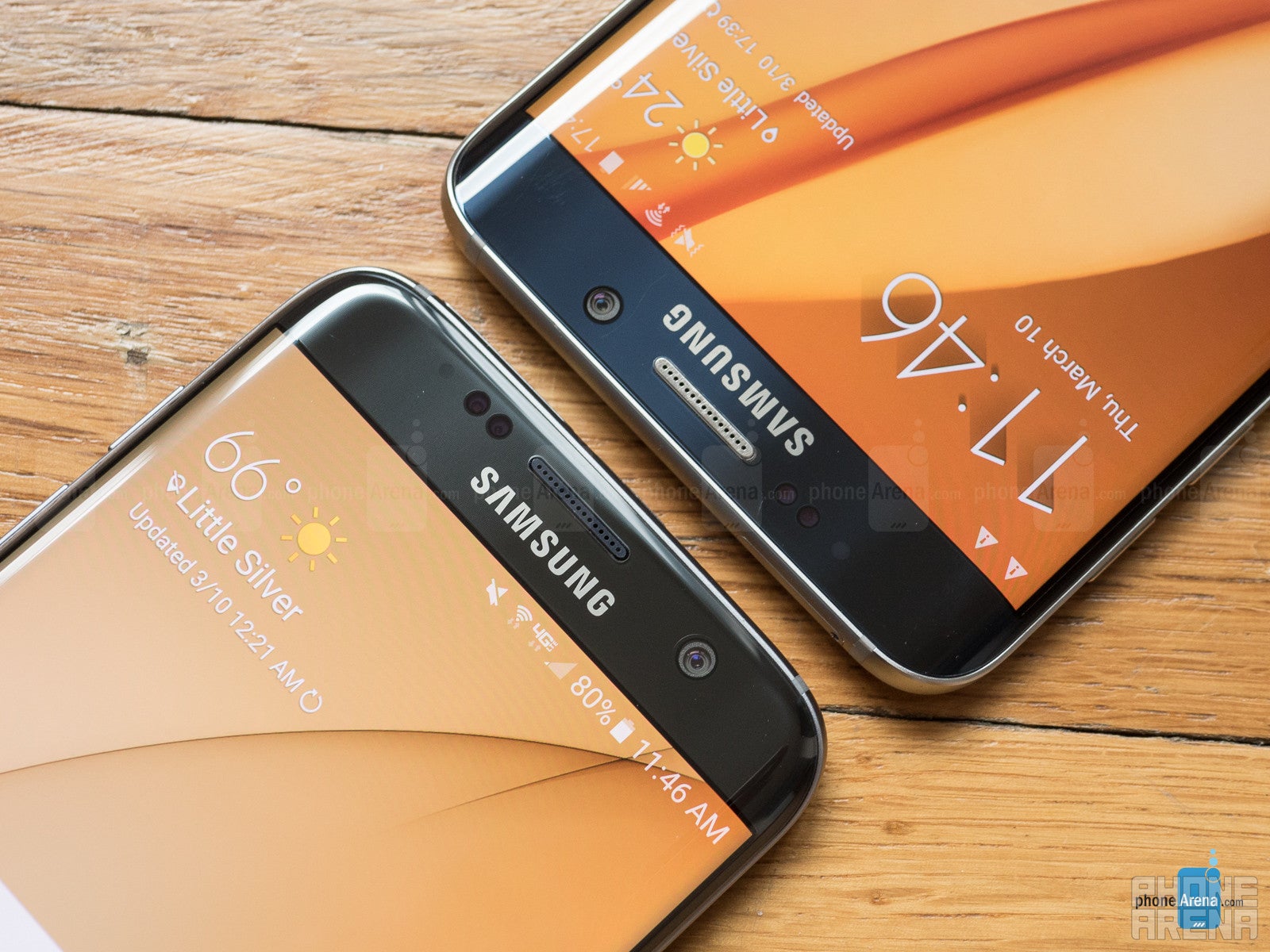
The speakerphone on both devices is suitable for noisy environments with its decent output. Although it isn't perfect by any means, it's still capable and it can stand up to usage over long periods of time.
Battery life
The Galaxy S6 edge+ can last a whole day's work, the Galaxy S7 edge – it cannot.
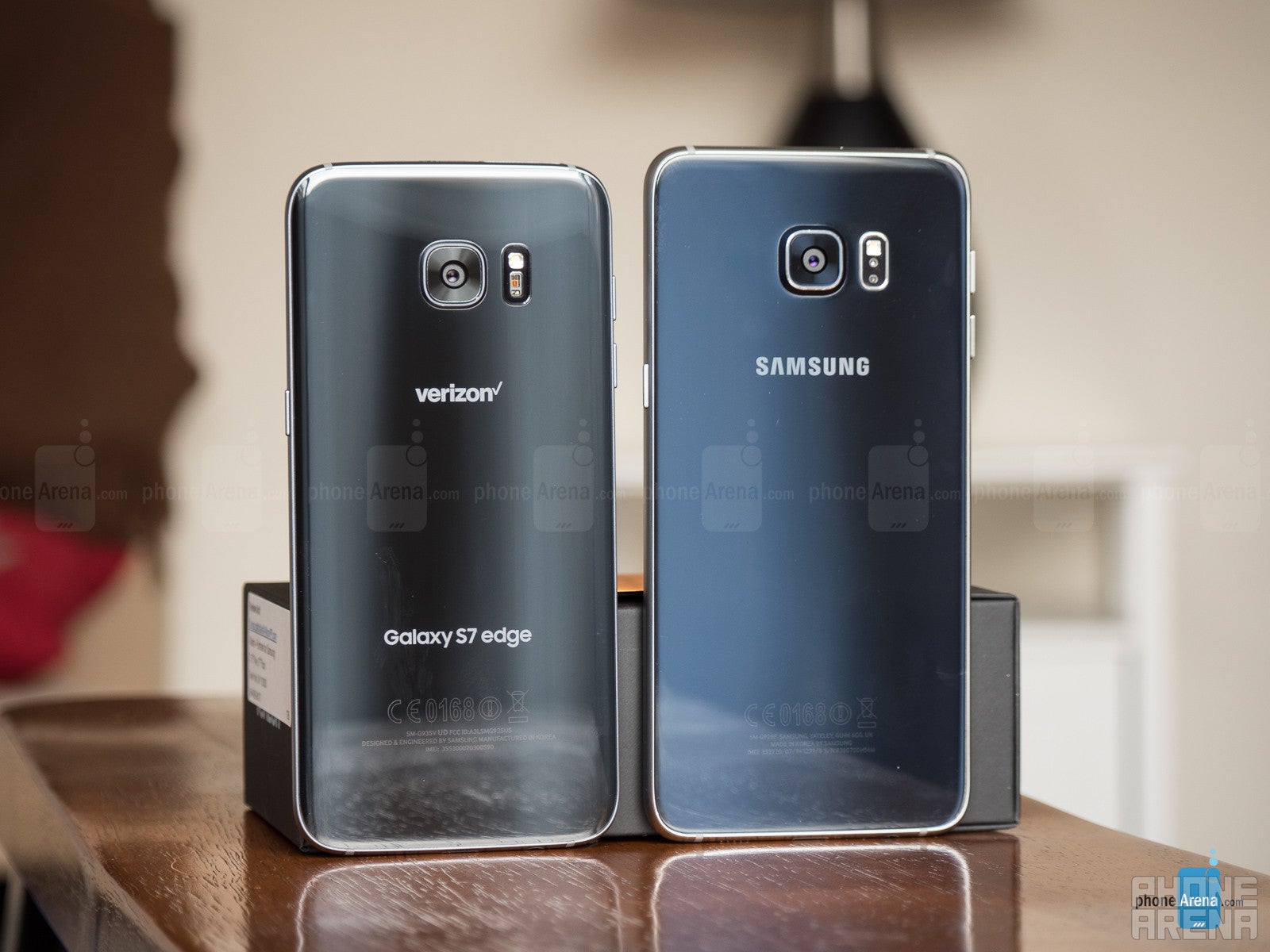
Conclusion
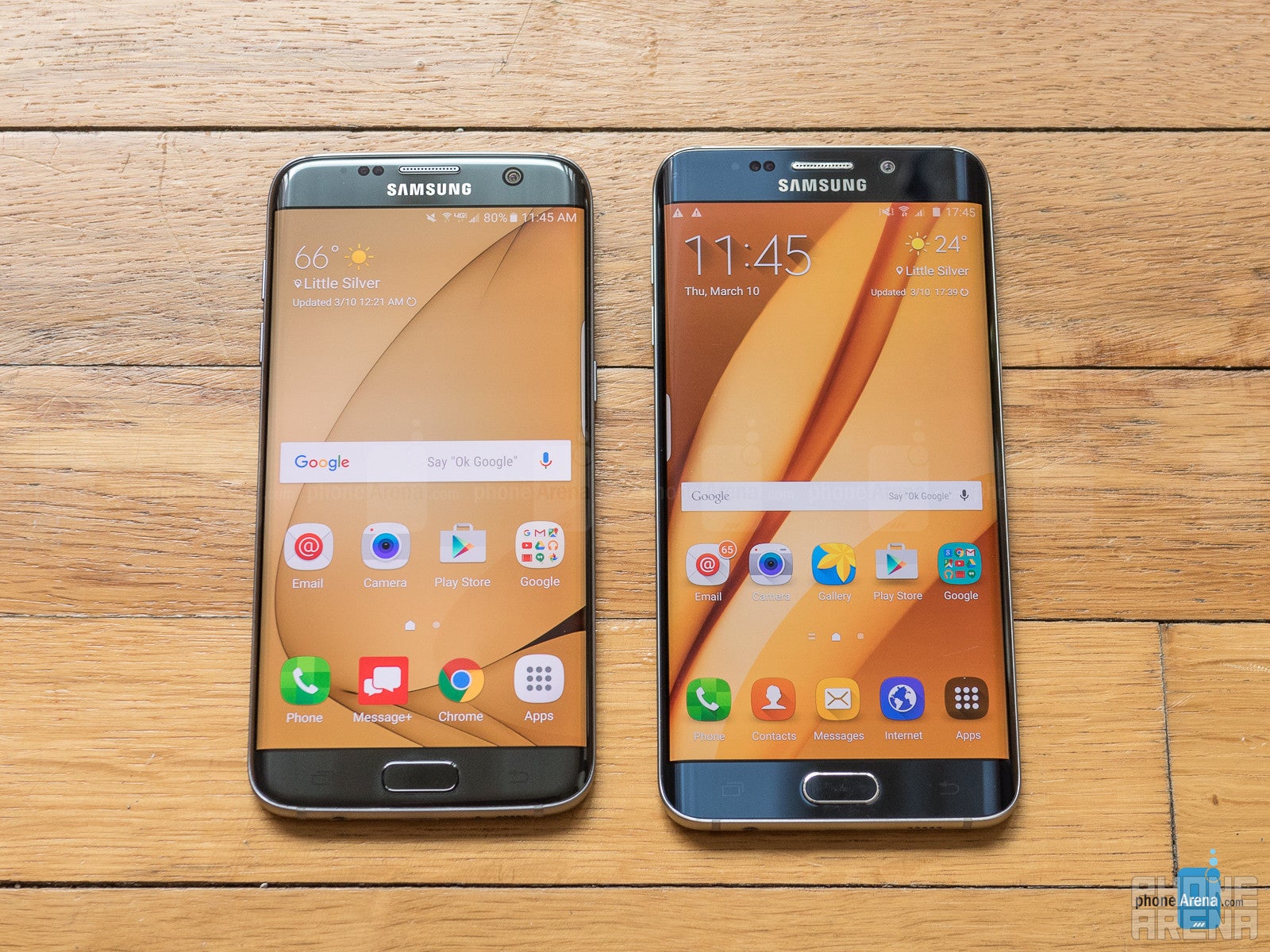
Similar as they are, the smartphones do have some differences to be mindful of. The Galaxy S7 edge has a better screen-to-body ratio, which makes it suitable for one-handed usage (with a bit of a stretch). The Galaxy S6 edge+ is a bit more of a handful, and it also lacks expandable storage, but its screen is a little bigger.
Hardware-wise, both handsets are speed demons with fast chipsets and blazing UFS storage memory, but it has to be noted that the Galaxy S6 edge+ can pull through a full 8-hour workday and more, whereas the Galaxy S7 edge may be unable to get you this far. That aside, both devices have excellent cameras, although the Galaxy S7 edge's is exceptionally fast to focus and takes better shots in low light.
With all of this in mind, let's have a look at the prices. At $799 unlocked, the Galaxy S7 edge is certainly one expensive smartphone. Currently, the Galaxy S6 edge+ can be had for $600 unlocked, and considering this, the 5.7-incher has an advantage over the Galaxy S7 edge in terms of value for money. Should you opt for the Galaxy S6 edge+, you get a bigger screen, a longer-lasting battery, with no performance compromises. Of course, if you still want Samsung's latest and greatest, there are carrier offers and upgrade plans to consider, so scoring a deal on it isn't impossible by any means.
Samsung Galaxy S7 edge
Pros
- Can be used one-handed (with a bit of a stretch)
- Waterproof
- Has expandable storage
Samsung Galaxy S6 edge+
Pros
- Bigger display
- Longer-lasting battery
- Cheaper

Follow us on Google News

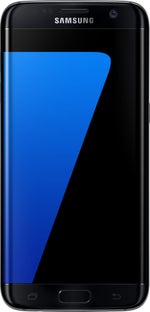
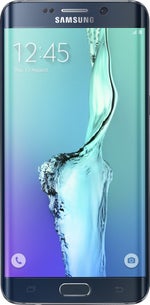





















Things that are NOT allowed:
To help keep our community safe and free from spam, we apply temporary limits to newly created accounts: